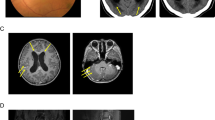Abstract
The interactions of Candida species with host cells are crucial for candidiasis. Recognition and adherence to host constituents are the keys to initial colonization of mucosal surfaces and the invasion of host cells. Resistance to mucosal candidiasis is mediated by cell-mediated immunity. Knowledge about host receptors on immune cells and the adhesins on the surface of C. albicans are more redundant, respectively, than about the ligands on the fungal surface and the structures on the host cells bound by adhesions. Silencing or disrupting specific genes both in the pathogen and the host are developing optimistically. The research on IL-12/23 p40 knockout (KO) mice is sound in providing preliminary array data about the principal pathways in oral C. albicans infection and clues about the molecular differences between wild-type (WT) and p40 KO mice of candidiasis in different sites, thus, hints that certain specific drug targets accessible to topical agents for the clinical treatment of oral candidiasis and relevant mucocutaneous precancerous lesions.
Similar content being viewed by others
References
Ashman RB (2008) Protective and pathologic immune responses against Candida albicans infection. Front Biosci 13(5):3334–3351
Saunus JM, Kazoullis A, Farah CS (2008) Cellular and molecular mechanisms of resistance to oral Candida albicans infections. Front Biosci 5:5345–5358
Cantorna MT, Balish E (1991) Acquired immunity to systemic candidiasis in immunodeficient mice. J Infect Dis 164:936–943
Ashman RB, Farah CS, Wanasaengsakul S, Hu Y, Pang G, Clancy RL (2004) Innate versus adaptive immunity in Candida albicans infection. Immunol Cell Biol 82:196–204
Filler SG (2006) Candida–host cell receptor–ligand interactions. Curr Opin Microbiol 9:333–339
Badrane H, Cheng S, Nguyen MH, Jia HY, Zhang Z, Weisner N, Clancy CJ (2005) Candida albicans IRS4 contributes to hyphal formation and virulence after the initial stages of disseminated candidiasis. Microbiology 151:2923–2931
Park H, Myers CL, Sheppard DC, Phan QT, Sanchez AA, Edwards JE Jr, Filler SG (2005) Role of the fungal Ras-protein kinase A pathway in governing epithelial cell interactions during oropharyngeal candidiasis. Cell Microbiol 7:499–510
Farah CS, Hu Y, Riminton S, Ashman RB (2006) Distinct roles for interleukin-12p40 and tumour necrosis factor in resistance to oral candidiasis defined by gene-targeting. Oral Microbiol Immunol 21:252–255
Feng Z, Jiang B, Chandra J, Ghannoum M, Nelson S, Weinberg A (2005) Human beta-defensins: differential activity against candidal species and regulation by Candida albicans. J Dent Res 84:445–450
Schofield DA, Westwater C, Balish E (2004) Beta-defensin expression in immunocompetent and immunodeficient germ-free and Candida albicans-monoassociated mice. J Infect Dis 190:1327–1334
Ganz T (2003) Defensins: antimicrobial peptides of innate immunity. Nat Rev Immunol 3:710–720
Taylor A, Verhagen J, Blaser K, Akdis M, Akdis CA (2006) Mechanisms of immune suppression by interleukin-10 and transforming growth factor-beta: the role of T regulatory cells. Immunology 117:433–442
Dongari-Bagtzoglou A, Fidel PL Jr (2005) The host cytokine responses and protective immunity in oropharyngeal candidiasis. J Dent Res 84:966–977
Naglik JR, Moyes D, Makwana J, Kanzaria P, Tsichlaki E, Weindl G, Tappuni AR, Rodgers CA, Woodman AJ, Challacombe SJ, Schaller M, Hube B (2008) Quantitative expression of the Candida albicans secreted aspartyl proteinase gene family in human oral and vaginal candidiasis. Microbiology 154:3266–3280
Author information
Authors and Affiliations
Corresponding author
Additional information
This work was supported by the Research and Development Program of Science & Technology, Hygiene Office in Zhejiang of China (2008C33026 and 2009A098).
Rights and permissions
About this article
Cite this article
He, H., Cong, Y., Yang, H. et al. Mutative expression in Candida albicans infection and cytokine signaling network in gene knockout mice. Eur J Clin Microbiol Infect Dis 29, 913–916 (2010). https://doi.org/10.1007/s10096-010-0916-0
Received:
Accepted:
Published:
Issue Date:
DOI: https://doi.org/10.1007/s10096-010-0916-0




